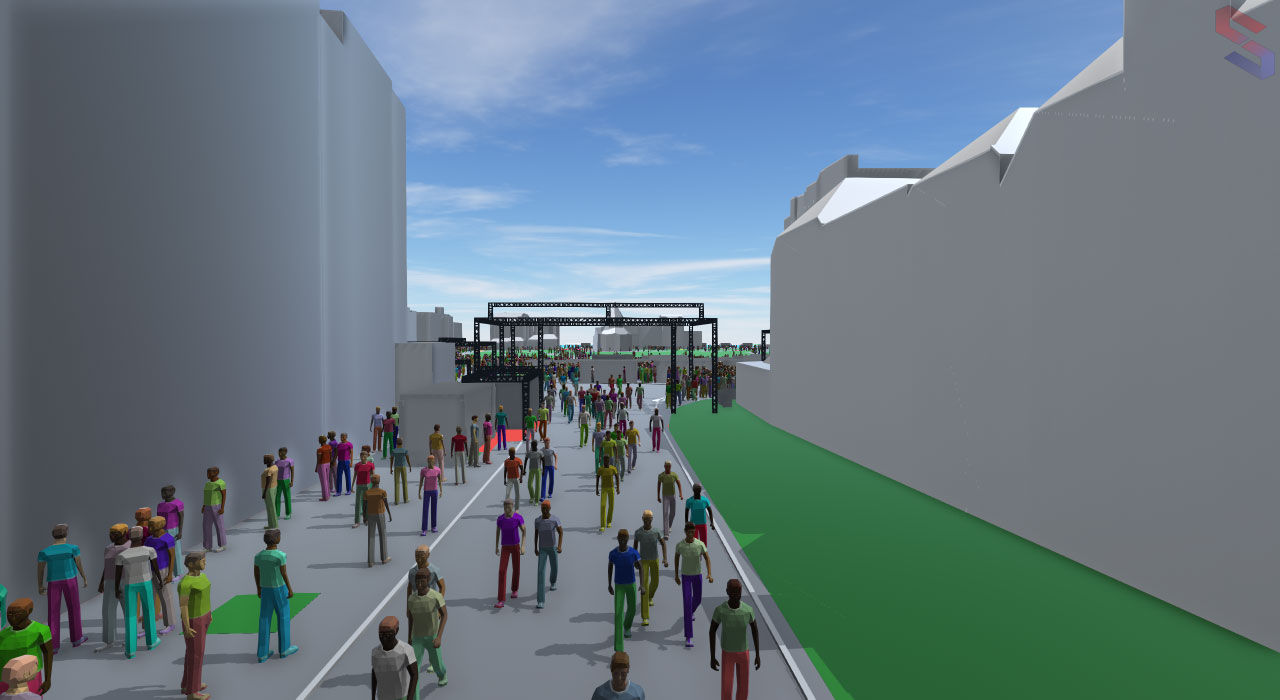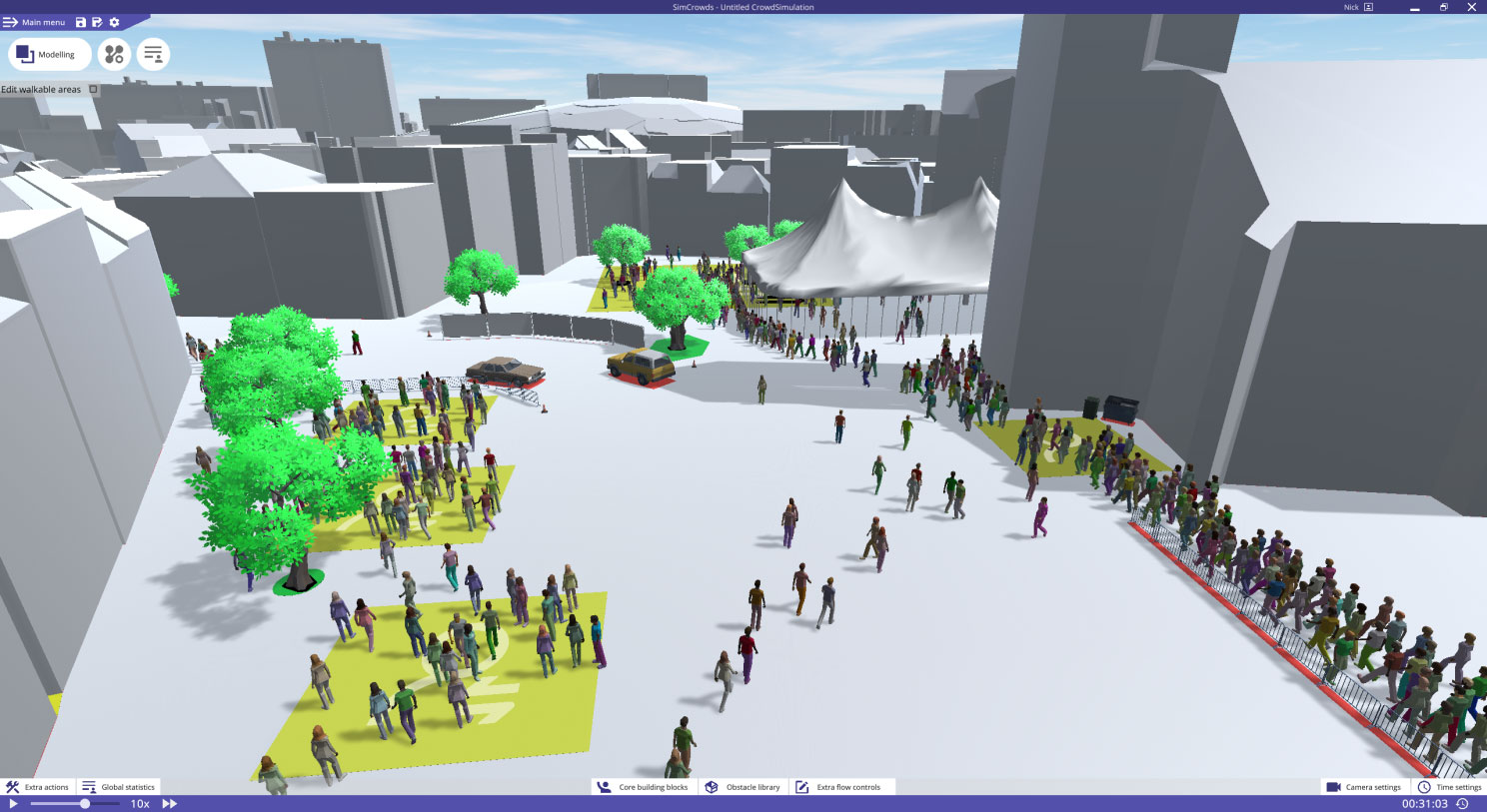
Realistic crowds in today's simulations
Today’s simulations need to be more realistic than ever before. In a world where ever-increasing numbers of people live in cities, crowds have become a part of everyday life. Whether it’s a group of people walking down the street or thousands of people at a sporting event, understanding how crowds move and behave is essential, and the need for efficient and realistic methods of managing pedestrian traffic has never been greater. Fortunately, advances in technology are providing new tools for dealing with this issue in the form of crowd simulation software such as SimCrowds. This software provides a versatile platform for visualizing and understanding the behavior of pedestrians in a wide variety of settings. SimCrowds includes a number of features that contribute to its high level of realism.
SimCrowds uses a variety of advanced algorithms that takes into account several factors, including the size of the pedestrians, their desired speed and direction, and the density of the crowd to establish realistic collision avoidance in the simulation. This ensures that pedestrians are able to avoid one another and obstacles within their environment, therefore preventing congestion while still moving toward their destination in an efficient manner.
The software also supports social group behaviors. This means that pedestrians can interact with each other in a realistic way, forming groups such as families, couples, and group excursions. This offers insight into how pedestrian group behavior can change in different circumstances, such as in an evacuation scenario.
Furthermore, SimCrowds takes into account the different pedestrian profiles based on age, gender, and height and then uses this information to create a more realistic simulation of how pedestrians interact with each other in a real-world scenario. The highly customizable pedestrian profiles feature is essential for ensuring that simulations are realistic. For example, you could create a group of rowdy teenagers who are more likely to push and shove their way through the crowd or a group of elderly pedestrians who move more slowly and take longer to reach their destination.

Global path planning is another crucial component in realistic crowd simulations. This is the process of determining the best route for each pedestrian to reach their destination. Different pedestrians may have other destinations, so the global path planning algorithms must take into account the different goals of the pedestrians in the simulation. This ensures that even in large and complex environments, pedestrians are able to find a quick and efficient route to their destinations.
Density-based re-planning is a final consideration for realistic crowd simulations. This is the process of adaptively changing the global path planning based on the crowd’s density. For example, if the simulation detects the crowd getting too dense in one area, it may change the global path planning to route pedestrians around the congestion.
Realistic crowd simulations are essential for a variety of applications, from video games to architectural walk-throughs. By considering different pedestrian profiles, global path planning, social group behaviors, and collision avoidance, developers can create believable and realistic simulations.
Read, like and share this post on our LinkedIn!